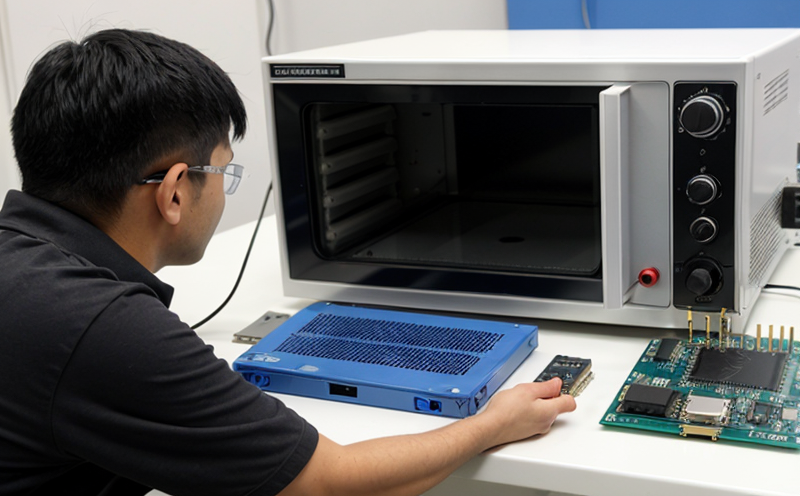IEEE 1332 Reliability Program Evaluation for Microelectronic Systems
The IEEE Standard P1332-2014 provides a structured framework to evaluate and improve the reliability of microelectronic systems. This standard is particularly valuable in ensuring that electronic components meet stringent quality standards, which are crucial for industries such as aerospace, automotive, consumer electronics, medical devices, and telecommunications.
The IEEE P1332-2014 standard addresses various aspects including program planning, data collection, analysis, and decision-making processes. It outlines a comprehensive approach to reliability engineering that is essential for organizations aiming to enhance product quality while reducing costs associated with failures and rework.
Microelectronic systems are at the heart of modern technology and are subject to numerous stresses during their lifecycle from manufacturing to deployment and beyond. The IEEE 1332 Reliability Program Evaluation offers a systematic method for assessing these risks early in the design process, thereby enabling proactive measures against potential failures.
The evaluation process involves several key steps: identifying critical failure modes, establishing reliability goals, selecting appropriate test methods, analyzing historical data, and implementing corrective actions. By following this structured approach, organizations can ensure that their microelectronic systems not only comply with industry standards but also exceed customer expectations in terms of performance and longevity.
One of the primary benefits of adhering to IEEE 1332 is enhanced product quality through continuous improvement initiatives. Organizations adopting this standard see improved yields, reduced warranty costs, increased market share, and better brand reputation due to higher reliability levels in their products.
The standard also promotes a culture of excellence within engineering teams by fostering an environment where best practices are consistently applied across projects. This leads not only to technical improvements but also to enhanced collaboration among multidisciplinary teams working on complex electronic systems.
Furthermore, compliance with IEEE 1332 helps businesses meet regulatory requirements and gain competitive advantage in the global market. Many jurisdictions have stringent regulations governing electronic components used in safety-critical applications like aviation or healthcare devices. Adherence to recognized international standards such as IEEE P1332 ensures that companies remain compliant without compromising on innovation.
Implementing a robust reliability program based on this standard also supports long-term sustainability goals by reducing waste associated with premature failures and extending product lifecycles. Organizations adopting these practices contribute positively towards environmental conservation efforts while simultaneously enhancing profitability through cost savings realized from fewer repairs needed over time.
In summary, implementing IEEE 1332 Reliability Program Evaluation for Microelectronic Systems provides comprehensive support to organizations looking to enhance their electronic component reliability programs. By following its structured methodology, companies can achieve higher levels of quality assurance which ultimately translate into better customer satisfaction and increased competitiveness in today's demanding markets.
Benefits
The implementation of IEEE 1332 Reliability Program Evaluation for Microelectronic Systems offers numerous advantages to organizations across various sectors. Some key benefits include:
- Enhanced Product Quality: Continuous improvement initiatives lead to better yields and lower warranty costs.
- Increased Market Share: Higher reliability levels in products contribute positively towards brand reputation.
- Better Brand Reputation: Consistency in applying best practices enhances overall customer satisfaction.
- Compliance with Regulations: Meeting stringent regulatory requirements ensures smoother interactions within the global market.
- Cost Savings: Reduced need for repairs and replacements results in significant financial savings over time.
- Environmental Contributions: Extended product lifecycles contribute positively towards environmental conservation efforts.
- Competitive Advantage: Proactive measures against potential failures ensure superior performance compared to competitors.
By integrating IEEE 1332 into their operations, businesses can significantly improve the reliability of microelectronic systems, thereby enhancing customer trust and loyalty while driving long-term growth and profitability.
Why Choose This Test
- Structured Approach: Provides a clear roadmap for evaluating reliability early in the design process.
- Data-Driven Decisions: Utilizes historical data to make informed decisions about product improvements.
- Comprehensive Coverage: Addresses all aspects of program planning, execution, and continuous improvement.
- Industry Recognition: Widely accepted by leading companies worldwide as a benchmark for reliability engineering.
- Proactive Measures: Encourages preventive actions against potential failures before they occur.
- Cost-Effective Solutions: Offers long-term cost savings through reduced warranty claims and fewer repairs.
- Enhanced Reputation: Builds trust among customers by delivering consistently reliable products.
Selecting IEEE 1332 Reliability Program Evaluation for Microelectronic Systems ensures that your organization stays ahead of the curve in terms of product quality and reliability. It offers a structured, data-driven approach tailored specifically to meet the unique challenges faced by microelectronics manufacturers today.
Environmental and Sustainability Contributions
The implementation of IEEE 1332 Reliability Program Evaluation for Microelectronic Systems plays an important role in supporting environmental sustainability initiatives. By improving product reliability, organizations contribute to several key areas:
- Eco-Friendly Products: Longer-lasting products mean less waste generated from premature failures.
- Reduced Energy Consumption: More efficient systems require less energy input over their lifetimes.
- Resource Efficiency: Optimized designs and materials reduce the need for additional resources during production.
- Circular Economy: Products with higher reliability are easier to recycle or repurpose at end-of-life.
In summary, IEEE 1332 not only enhances product quality but also supports broader sustainability goals by promoting a more efficient use of resources and reducing environmental impact throughout the product lifecycle.





